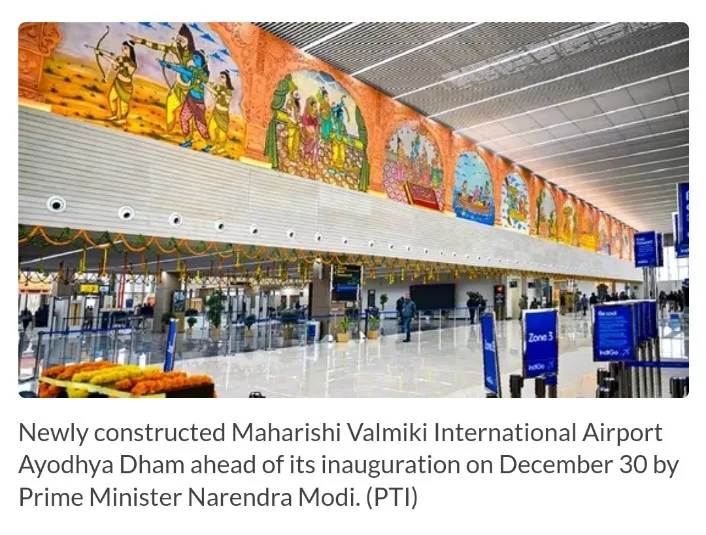Ayodhya, the sacred temple town, is set to witness improved air connectivity with the inauguration of the Maharishi Valmiki International Airport. Airport Authority of India (AAI) Chairman Sanjeev Kumar proudly announced that the construction of the airport was successfully concluded in an impressive timeframe of just 20 months.
Undertaken by AAI based on a Memorandum of Understanding (MoU) signed with the Uttar Pradesh government in April last year, the airport is situated on 821 acres of land allocated by the state. Sanjeev Kumar emphasized the importance of air connectivity for Ayodhya and expressed excitement about the expansion.
Prime Minister Modi inaugurated the airport, which features a 2200-meter runway capable of accommodating A-321 type aircraft. The facility includes two link taxiways, an apron for eight A321 type aircraft, and a designated Ground Support Equipment (GSE) area.
Looking ahead to Phase 2, plans include a new terminal building covering 50,000 square meters to serve 4,000 passengers during peak hours and cater to 60 lakh passengers annually. The expansion also involves a parallel taxi track, an apron with 18 additional aircraft parking stands, and various amenities.
Costing ₹350 crore, the airport incorporates sustainability features in its design and construction, reflecting the historical and cultural significance of Ayodhya. The terminal building, inspired by the upcoming Shri Ram Mandir, includes nine check-in counters, three conveyor belts, and five X-BIS machines.
The completion of Maharishi Valmiki International Airport holds great significance for pilgrims visiting Ayodhya’s revered sites, including Shri Ram Mandir, Ram ki Paidi, Hanuman Garhi, Nageshwar Nath Temple, and the Birla Temple.







